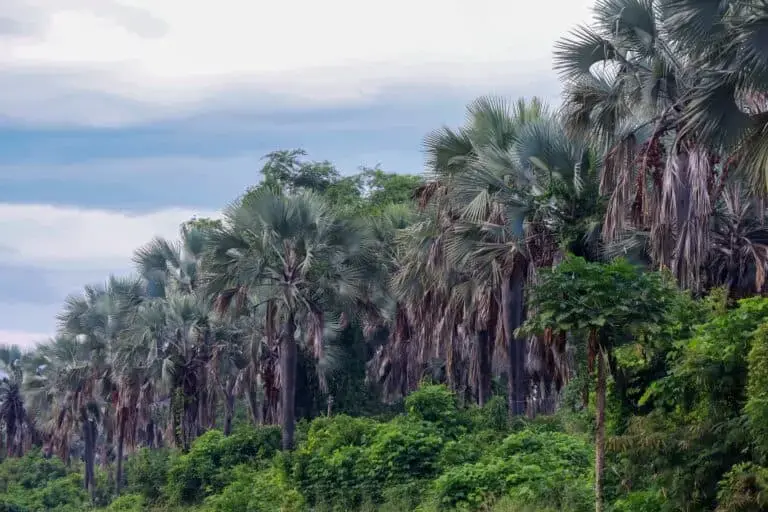This story excerpt was translated from French. To read the original story in full, visit Yaga Burundi. You may also view the original story on the Rainforest Journalism Fund website here. Our RJF website is available in English, Spanish, bahasa Indonesia, French, and Portuguese.

The false palm, an endemic tree species, is found only in the Rusizi National Park. However, it is threatened by abusive exploitation and illegal trade. For the local inhabitants of this park, it plays an important role in their daily lives. OBPE has discovered a technique to multiply this species.
10 o'clock. We are in the Gihanga commune, in Bubanza province, exactly in Buringa, a village bordering the Rusizi National Park. The false palm tree commonly called igikoko, drawn in this park, plays an important role in the daily life of the villagers. It is omnipresent in the construction of houses, stables, stores and fences.
'A reality': The trade of false palm
As usual, this village is very active. However, some men seem to be idle. A group of seven are sitting on the ground in front of a small house. At first glance, they appear taciturn. Perhaps they are suspicious of two strangers. They don't know the purpose of our presence in this country. However, they will end up opening up and talking as the exchange goes on.

As a nonprofit journalism organization, we depend on your support to fund journalism covering underreported issues around the world. Donate any amount today to become a Pulitzer Center Champion and receive exclusive benefits!
Claude*, one of them, agrees to testify: "In this village, the illegal exploitation of false palm trees is really a reality. A bundle of false palm branches costs 12,000 BIF.
Moreover, he affirms that the transport of the branches of the false palm tree cannot be done during the day. "During the day, they enter the national park and make the cut. It is during the evening that they take out their booty," confides Claude
His testimony is corroborated by Deo,* a rice farmer. "Two months ago, when I was transplanting rice, I saw people cutting branches of false palm trees. But I never saw how they were moving them," he recalls.
According to him, they are stored in clandestine places. From these hiding places, a part is sold in this commune. Another part is transported to Bujumbura, where the branches of this tree have become building materials for the fences of the houses in the outskirts.
- View this story on Ejoheza News







